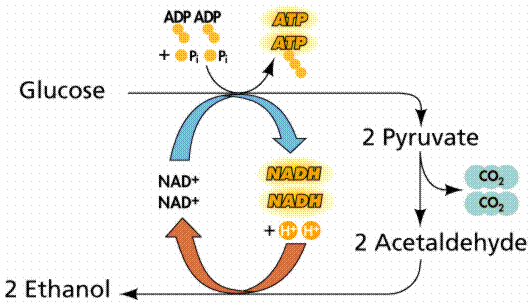If the oxygen is not available, we wouldn't be able to continue glycolysis. One method involves transferring the hydrogen atoms of NADH to certain organic molecules instead of the electron transport chain. This process is called Fermentation.
Bacteria - Ethanol Fermentation

Fig. 1 Ethanol fermentation creates ehtnaol and carbon dioxide from glucose, In this process, NADH is oxidized to NAD+, allowing glycolysis to continue
Eukaryotes (Human, animal) - Lactate (Lactic acid) Fermentation.

Figure 2. Lactate fermentation produces lactic acid from glucose. inthe process, NADH is oxidized to NAD+, allowing glycolysis to continue.
This process is much more effective than ethanol fermentation because in this process, the pyruvate is directly converted into lactate whereas ethanol fermentation requires extra energy to covnert pyruvate into 2 Acetaldehyde. When the Lactate is accumlated in your muscle, it causes stiffness, soreness, and fatigue but once the enough oxygen is provided to blood, it is converted back into pyruvate then goes back through the kreb cycle.
No comments:
Post a Comment